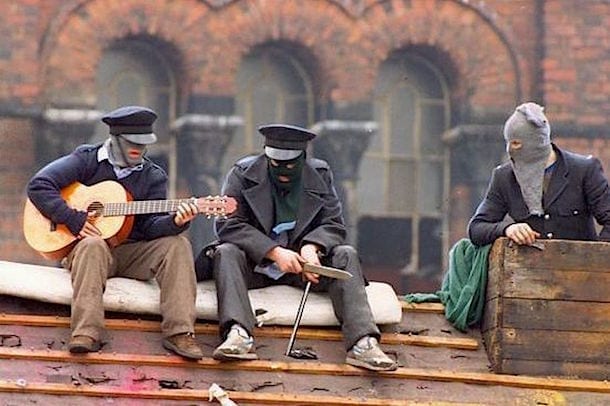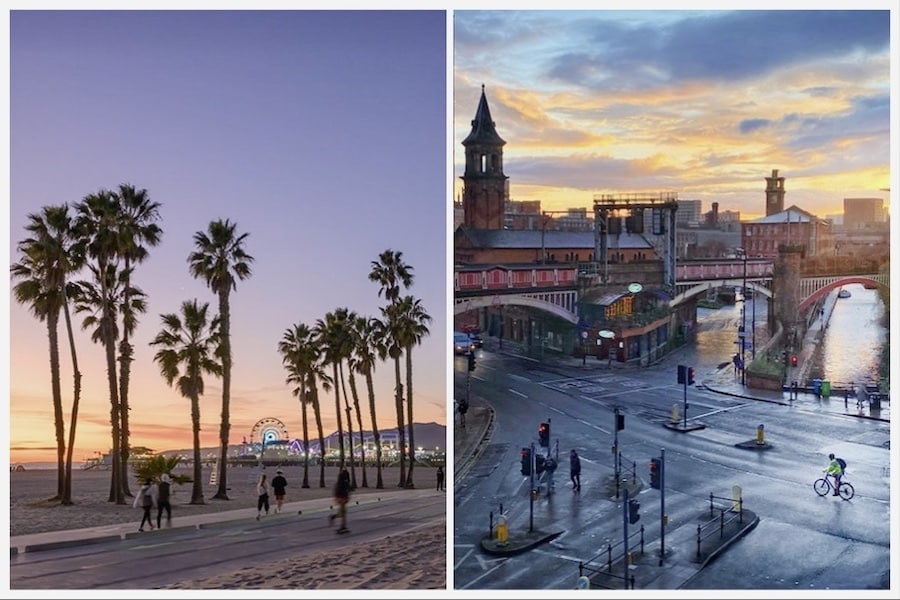The intriguing history of the Hidden Gem church
- Written by Ed Glinert
- Last updated 1 year ago
- Cornerstone, Culture, History
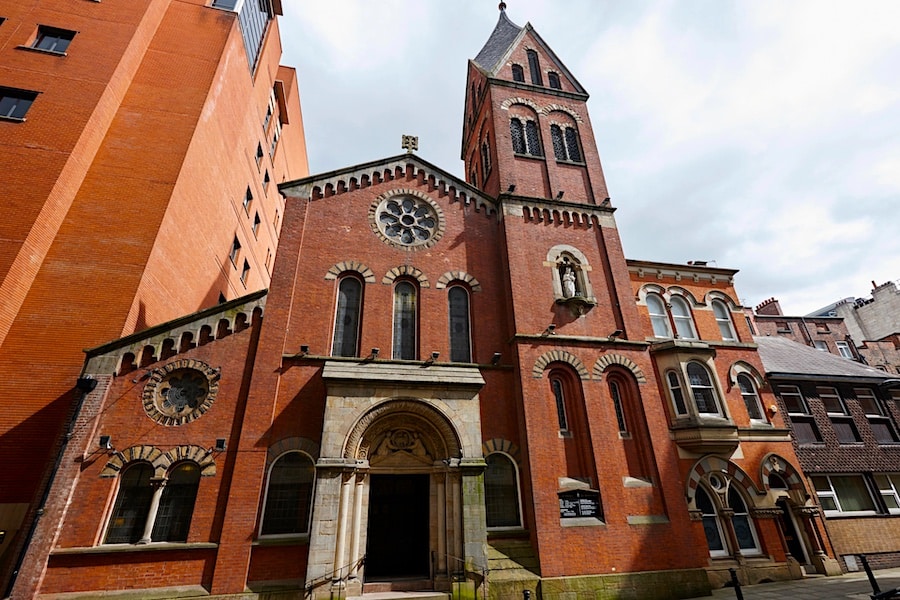
Manchester has long been a mainly Protestant city. The Cathedral describes itself as Anglican, the church in the centre of the city is the Protestant St Ann’s, and there are still some remaining non-conformist chapels and meeting places in the centre.
St Mary the Hidden Gem, the only Catholic church, has a somewhat lower profile, as its name suggests.
When it opened in 1794, the Hidden Gem was the first Catholic church to be built in England for some 250 years. After Henry VIII broke the church from Rome in the 1530s, religious leaders were fearful of openly displaying their Catholicism.
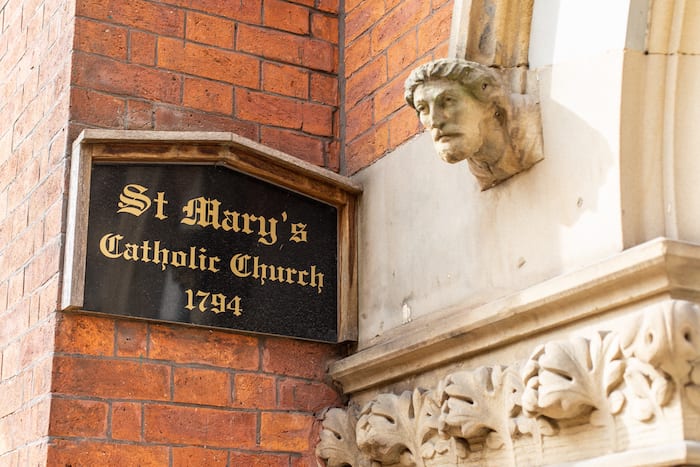
During the 17th century, Catholicism became increasingly ostracised, culminating in the so-called Glorious Revolution of 1689 which secured a Protestant succession for the Crown.
Increasingly, laws were passed to tighten discrimination against Catholics. Mass in Latin was banned. Catholics could not teach, practise law, own a horse worth more than five pounds, or serve in the armed forces (in case they sided with the Pope and Britain’s enemies). In Manchester, Catholic families met secretly to conduct services.
It wasn’t until the late 18th century – with the Protestant succession finally secured – that the authorities began to relent.
In 1774, a Catholic chapel was established in Rook Street (near modern day Fountain Street) dedicated to St Chad. When the chapel burned down in 1846, St Chad’s moved to a new church at the bottom of Cheetham Hill Road which is there to this day.
In 1780, the government tried to scrap much of the anti-Catholic legislation, only to find the London mob hostile to change – a rare instance of mass protest to maintain the status quo. It resulted in England’s worst outbreak of violence, the Gordon Riots, and hundreds of deaths.
As the Industrial Revolution took hold, more and more Irish Catholic families settled in Manchester.
Most of the remaining anti-Catholic discrimination was finally expunged in 1829 with the Roman Catholic Relief Act.
Meanwhile, Father Rowland Broomhead, rector of St Chad’s, had bought a plot of land near Deansgate in 1794 and obtained permission for a more permanent place of worship there. The church was dedicated to St Mary on 30 November 1794. Mary was chosen because the original church in Manchester – now the Cathedral – was dedicated to her.
A plaque on the wall by the entrance of the Hidden Gem proclaims “1794” but the building now on Mulberry Street is not the late 18th century original. In the middle of the day on 8 August 1835 a tearing, breaking sound could be heard from the roof, which duly collapsed.
The firm of Weightman and Hadfield rebuilt the church in an eclectic mix of Norman, Gothic and Byzantine styles that horrified Augustus Welby Pugin, the country’s leading Gothic architect, who raged how “it shows to what depth of error even good men fall, when they go whoring after strange styles”.
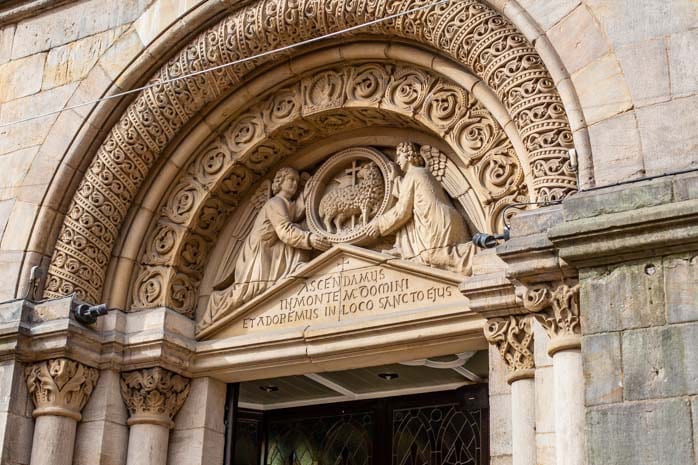
Cardinal Vaughan of Salford came up with the description “the Hidden Gem”. He also obtained a medieval font for the church and added the carved doorway which came from Germany.
However, the grandest statement in Manchester of resurgent Catholicism was not the Hidden Gem but the Church and Friary of St Francis in Gorton, better known as Gorton Monastery.
By creating one of the tallest churches in the country, set cleverly on the edge of built-up Manchester, the Franciscans with the help of Pugin’s son, architect Edward Welby, could show Protestant Manchester looking up at the church in the distance that the Catholics had clearly returned.
To find out more about the history of the city through its sites, signs, symbols, statues, settings, join tour guide and author Ed Glinert on one of his New Manchester Walks. More information on the website.
- This article was last updated 1 year ago.
- It was first published on 26 April 2019 and is subject to be updated from time to time. Please refresh or return to see the latest version.
Did we miss something? Let us know: [email protected]
Want to be the first to receive all the latest news stories, what’s on and events from the heart of Manchester? Sign up here.
Manchester is a successful city, but many people suffer. I Love Manchester helps raise awareness and funds to help improve the lives and prospects of people across Greater Manchester – and we can’t do it without your help. So please support us with what you can so we can continue to spread the love. Thank you in advance!
An email you’ll love. Subscribe to our newsletter to get the latest news stories delivered direct to your inbox.
Got a story worth sharing?
What’s the story? We are all ears when it comes to positive news and inspiring stories. You can send story ideas to [email protected]
While we can’t guarantee to publish everything, we will always consider any enquiry or idea that promotes:
- Independent new openings
- Human interest
- Not-for-profit organisations
- Community Interest Companies (CiCs) and projects
- Charities and charitable initiatives
- Affordability and offers saving people over 20%
For anything else, don’t hesitate to get in touch with us about advertorials (from £350+VAT) and advertising opportunities: [email protected]
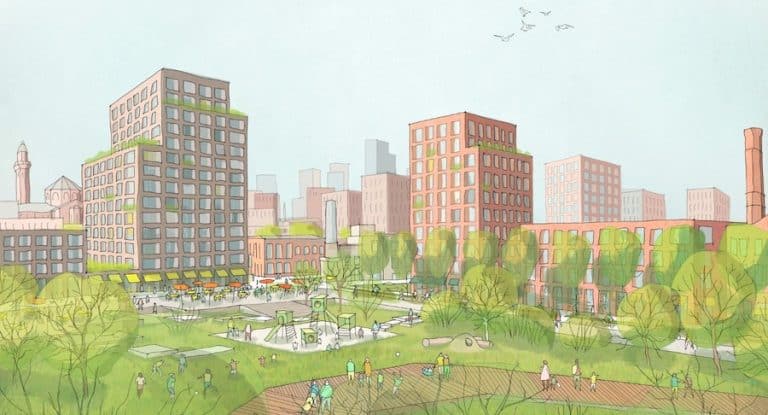
Strangeways could be home to thousands – but there’s one big problem in the way
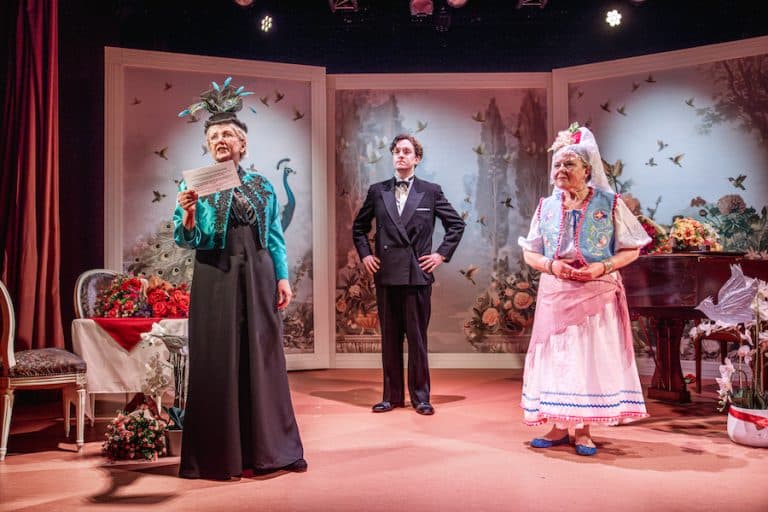
Review: Glorious! at the Hope Mill Theatre celebrates our individuality







